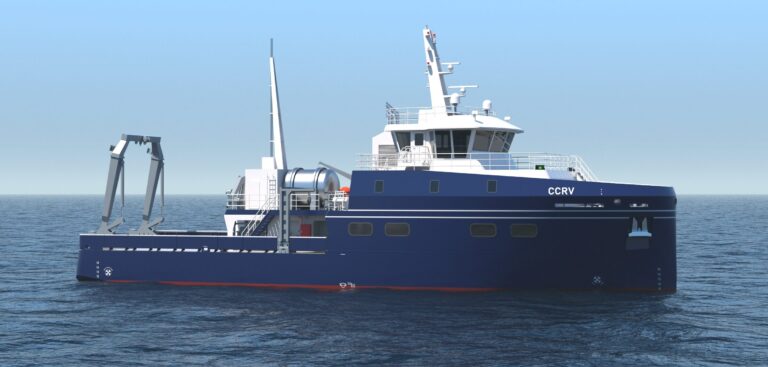The University of California San Diego’s Scripps Institution of Oceanography has selected naval architecture and marine engineering company Glosten to design the university’s new coastal research vessel.
Glosten will be responsible for delivering the preliminary design, contract design and detailed design for the research vessel which is set to be operated by Scripps Oceanography.
The vessel’s first-of-its-kind hydrogen-hybrid propulsion system will integrate hydrogen fuel cells alongside a conventional diesel-electric power plant to enable zero-emission operations. The design has been scaled to ensure the boat can conduct 75% of its research operations without using a fossil fuel. Clean-running modern diesel generators will provide extra power when needed for longer duration operation.
Dedicated to California research missions, the 125ft vessel will feature a wide range of instruments and sensing systems including acoustic Doppler current profilers, seafloor mapping systems, midwater fishery imaging systems, biological and geological sampling systems and support for airborne drone operations. These will enable multidisciplinary research to advance the university’s understanding of physical and biological processes active in California’s coastal oceans.
“This vessel will be the first of its kind, and the selection of the naval architect is a major milestone for Scripps,” said Bruce Appelgate, associate director and head of ship operations at Scripps Oceanography. “Fundamentally, our ships have to be reliable and capable in order to support the innovative research our scientists conduct at sea. On top of that, the ship we envision needs to demonstrate that zero-emission power systems work effectively under demanding real-world conditions.”
“I am proud to see Scripps Institution of Oceanography arrive at the critical milestone of selecting a naval architect for this one-of-a-kind hydrogen-hybrid research vessel,” said California state senate president pro tempore Toni G Atkins. “Scripps and California continue to set the global standard for developing innovative solutions to address our most pressing environmental challenges. This vessel will play a critical role in supporting policy decisions to protect our state’s precious coastal environment from climate change impacts, while demonstrating hydrogen’s critical role in California’s carbon-free future.”
Last summer, US$35m was allocated by California legislators for the design and construction of the vessel. When complete, the vessel will serve as a platform for education and research dedicated to understanding the California coast and climate change impacts to the coastal ecosystem.
“Scripps Institution of Oceanography’s hydrogen-hybrid coastal research vessel is a significant demonstration of California’s commitment to fighting climate change, decarbonizing our blue economy, and improving air quality for port-adjacent disadvantaged communities,” said Liane Randolph, chair of the California Air Resources Board.
With the basic design expected to take a year, a final design will then be approved by the US Coast Guard. A shipyard will subsequently be chosen for the vessel’s construction.
Upon its completion the vessel will replace research vessel Robert Gordon Sproul, which is nearing the end of its service life after 42 years. It will join a fleet of vessels managed by Scripps which are stationed and maintained at the university’s Nimitz Marine Facility in Point Loma.



